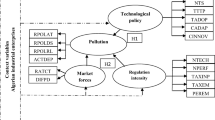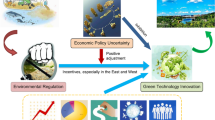Abstract
China’s fast industrialization and economic expansion has led to environmental degradation, prompting the government to implement a slew of environmental regulations and laws. This article examines how China’s stringent environmental policies and legislation have impacted the development of environmental technology. The study’s panel of Chinese companies confirmed that more stringent regulations really spurred innovation in green technology. This research lends credence to the premise that stricter environmental regulations are helpful in inspiring the development of cleaner technology that may help mitigate environmental issues. Research also shows that tighter environmental legislation increases environmental policy’s effect on technological development. According to these results, environmental law may improve the efficiency of environmental policy by providing a hospitable framework for the application of technological innovation. The findings of this research have significant implications for Chinese policymakers committed to fostering sustainable development. The need of rigorous environmental rules to support comprehensive environmental policies that promote the development of greener technology is emphasized. The results shed even more light on how crucial it is to enforce environmental laws in order to ensure that environmental policies are effectively implemented. In essence, this study contributes to the expanding body of knowledge on the link between environmental policy and technical advancement by illuminating the potential for China’s environmental policy and law to work together to encourage sustainable development. China’s investment in green tech research and development may mitigate the environmental damage caused by its rapid economic growth.
Graphical abstract
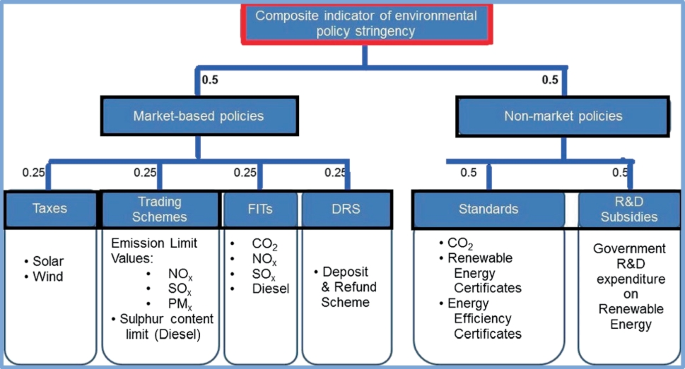
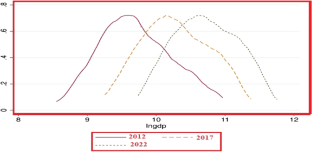




Similar content being viewed by others
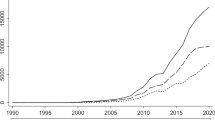
Data availability
The data may be obtained upon request.
References
Abdi AH, Warsame AA, Sheik-Ali IA (2023) Modelling the impacts of climate change on cereal crop production in East Africa: evidence from heterogeneous panel cointegration analysis. Environ Sci Pollut Res 30:35246–35257
Afshan S, Yaqoob T (2022) The potency of eco-innovation, natural resource and financial development on ecological footprint: a quantile-ARDL-based evidence from China. Environ Sci Pollut Res 29:50675–50685
Afshan S, Yaqoob T, Meo MS, Hamid B (2023) Can green finance, green technologies, and environmental policy stringency leverage sustainability in China: evidence from Quantile-ARDL estimation. Environ Sci Pollut Res:1–15
Ahmed K, Ahmed S (2018) A predictive analysis of CO2 emissions, environmental policy stringency, and economic growth in China. Environ Sci Pollut Res 25:16091–16100
Ando T, Li K, Lu L (2023) A spatial panel quantile model with unobserved heterogeneity. J Econom 232:191–213
Behera P, Sethi N (2022) Nexus between environment regulation, FDI, and green technology innovation in OECD countries. Environ Sci Pollut Res 29:52940–52953
Bhuiyan MA, Kahouli B, Hamaguchi Y, Zhang Q (2023) The role of green energy deployment and economic growth in carbon dioxide emissions: evidence from the Chinese economy. Environ Sci Pollut Res 30:13162–13173
Bildirici M, Ersin ÖÖ (2023) Nexus between Industry 4.0 and environmental sustainability: a Fourier panel bootstrap cointegration and causality analysis. J Clean Prod 386:135786
Carfora A, Pansini RV, Romano A, Scandurra G (2018) Renewable energy development and green public policies complementarities: the case of developed and develo** countries. Renew Energy 115:741–749
Chen M, Huang W, Ali S (2023) Asymmetric linkages between wind energy and ecological sustainability: evidence from quantile estimation. Environ Dev 45:100798
Chen Y, Chen Z, Guo D, Zhao Z, Lin T et al (2022) Underground space use of urban built-up areas in the central city of Nan**g: Insight based on a dynamic population distribution. Underground Space 7(5):748–766. https://doi.org/10.1016/j.undsp.2021.12.006
Dong Z, He Y, Wang H, Wang L (2020) Is there a ripple effect in environmental regulation in China?–Evidence from the local-neighborhood green technology innovation perspective. Ecol Ind 118:106773
Du K, Cheng Y, Yao X (2021) Environmental regulation, green technology innovation, and industrial structure upgrading: The road to the green transformation of Chinese cities. Energy Econ 98:105247
Fan J, Teo T (2022) Will China’s R&D investment improve green innovation performance? An empirical study. Environ Sci Pollut Res 29:39331–39344
Fang Y, Wang H, Fang P, Liang B, Zheng K, Sun Q et al (2023) Life cycle assessment of integrated bioelectrochemical-constructed wetland system: environmental sustainability and economic feasibility evaluation. Resour Conserv Recycl 189:106740. https://doi.org/10.1016/j.resconrec.2022.106740
Feng S, Chong Y, Li G, Zhang S (2022) Digital finance and innovation inequality: evidence from green technological innovation in China. Environ Sci Pollut Res 29:87884–87900
Guo Q, Zhong J (2022) The effect of urban innovation performance of smart city construction policies: Evaluate by using a multiple period difference-in-differences model. Technol Forecast Soc Change 184:122003. https://doi.org/10.1016/j.techfore.2022.122003
Guo Y, **a X, Zhang S, Zhang D (2018) Environmental regulation, government R&D funding and green technology innovation: evidence from China provincial data. Sustainability 10:940
Habiba U, **nbang C, Anwar A (2022) Do green technology innovations, financial development, and renewable energy use help to curb carbon emissions? Renew Energy 193:1082–1093
Hafeez M, Yang J, Jadoon AK, Zahan I, Salahodjaev R (2022) Exploring the asymmetric determinants of consumption and production-based CO2 emissions in China. Environ Sci Pollut Res 29:65423–65431
Han Y, Zhe C, Liu X (2023) Is the carbon emissions trading system conducive to the urban green technology innovation level? Evidence from China. Energy Rep 9:3787–3799
Hasan MM, Du, F. (2023) Nexus between green financial development, green technological innovation and environmental regulation in China. Renew Energy 204:218–228
Hong Q, Cui L, Hong P (2022) The impact of carbon emissions trading on energy efficiency: Evidence from quasi-experiment in China's carbon emissions trading pilot. Energy Econ 110:106025
Hurrell A (1994) A crisis of ecological viability? Global environmental change and the nation state. Political Stud 42:146–165
Inuwa N, Adamu S, Hamza Y, Sani MB (2023) Does dichotomy between resource dependence and resource abundance matters for resource curse hypothesis? New evidence from quantiles via moments. Resour Policy 81:103295
Kazemzadeh E, Fuinhas JA, Salehnia N, Osmani F (2023) The effect of economic complexity, fertility rate, and information and communication technology on ecological footprint in the emerging economies: a two-step stirpat model and panel quantile regression. Qual Quant 57:737–763
Koenker R, Hallock KF (2001) Quantile regression. J Econ Perspect 15(4):143–156
Kolade O, Atiase V, Murithi W, Mwila N (2021) The business models of tech hubs in Africa: implications for viability and sustainability. Technol Anal Strat Manag 33:1213–1225
Lai X, Liu Z, Luo S (2020) Assessment on the effectiveness of environmental regulation in China—evidence from a panel data analysis. Environ Sci Pollut Res 27:37363–37376
Li F, Xu Z, Ma H (2018) Can China achieve its CO2 emissions peak by 2030? Ecol Ind 84:337–344
Li K, Qi S, Shi X (2023a) Environmental policies and low-carbon industrial upgrading: Heterogenous effects among policies, sectors, and technologies in China. Technological Forecasting and Social Change 191:122468
Li S, Samour A, Irfan M, Ali M (2023b) Role of renewable energy and fiscal policy on trade adjusted carbon emissions: evaluating the role of environmental policy stringency. Renew Energy 205:156–165
Li X, Guo D, Feng C (2022a) The carbon emissions trading policy of China: does it really promote the enterprises’ green technology innovations? Int J Environ Res Public Health 19:14325
Li X, Hu Z, Zhang Q (2021) Environmental regulation, economic policy uncertainty, and green technology innovation. Clean Technol Environ Policy 23:2975–2988
Li Z, Huang Z, Su Y (2023c) New media environment, environmental regulation and corporate green technology innovation: Evidence from China. Energy Econ 119:106545
Li Z, Kuo Y-K, Mahmud AR, Nassani AA, Haffar M, Muda I (2022b) Integration of renewable energy, environmental policy stringency, and climate technologies in realizing environmental sustainability: evidence from OECD countries. Renew Energy 196:1376–1384
Lin B, Ma R (2022) How does digital finance influence green technology innovation in China? Evidence from the financing constraints perspective. J Environ Manag 320:115833
Liu H, Wong W-K, Cong PT, Nassani AA, Haffar M, Abu-Rumman A (2023a) Linkage among urbanization, energy consumption, economic growth and carbon emissions. Panel data analysis for China using ARDL model. Fuel 332:126122
Liu J, Zhao M, Zhang C, Ren F (2023b) Analysis of the influence of heterogeneous environmental regulation on green technology innovation. Sustainability 15:3649
Liu W, Shen Y, Razzaq A (2023c) How renewable energy investment, environmental regulations, and financial development derive renewable energy transition: Evidence from G7 countries. Renew Energy 206:1188–1197
Liu X, Li Z, Fu X, Yin Z, Liu M, Yin L et al (2023) Monitoring house vacancy dynamics in the Pearl River Delta region: a method based on NPP-VIIRS night-time light remote sensing images. Land 12(4). https://doi.org/10.3390/land12040831
Liu Y, Zhang Z (2022) How does economic policy uncertainty affect CO2 emissions? A regional analysis in China. Environ Sci Pollut Res 29:4276–4290
Liu Z, Sun H (2021) Assessing the impact of emissions trading scheme on low-carbon technological innovation: evidence from China. Environ Impact Assess Rev 89:106589
Loong Z, Ai X, Huang T, **ang S (2021) The impact of AI on employment and the corresponding response of PRC labor law. J Chinese Hum Resour Manag 12(2):69–94. https://doi.org/10.47297/wspchrmWSP2040-800506.20211202
Luo Y, Salman M, Lu Z (2021) Heterogeneous impacts of environmental regulations and foreign direct investment on green innovation across different regions in China. Sci Environ 759:143744
Malode SJ, Prabhu KK, Mascarenhas RJ, Shetti NP, Aminabhavi TM (2021) Recent advances and viability in biofuel production. Energy Convers Manag: X 10:100070
Nayak DK, Hazarika B (2023) Linkage between income and government expenditure at indian sub-nationals: a second-generation panel cointegration techniques. J Dev Areas 57:205–228
Nesta L, Vona F, Nicolli F (2014) Environmental policies, competition and innovation in renewable energy. J Environ Econ Manag 67:396–411
Nitlarp T, Kiattisin S (2022) The impact factors of Industry 4.0 on ESG in the energy sector. Sustainability 14:9198
Nzama L, Sithole T, Kahyaoglu SB (2023) The impact of government effectiveness on trade and financial openness: the generalized quantile panel regression approach. J Risk Financial Manag 16:14
Ouyang X, Li Q, Du K (2020) How does environmental regulation promote technological innovations in the industrial sector? Evidence from Chinese provincial panel data. Energy Policy 139:111310
Poveda AC, Martínez CIP (2023) Violence and economic development in Mexico: a panel data cointegration approach. Dev Stud Res 10:2169733
Qin Z, Liang Y, Yang C, Fu Q, Chao Y, Liu Z et al (2023) Externalities from restrictions: Examining the short-run effects of urban core-focused driving restriction policies on air quality. Trans Res Part D: Trans Environ 119:103723. https://doi.org/10.1016/j.trd.2023.103723
Samant S, Thakur-Wernz P, Hatfield DE (2020) Does the focus of renewable energy policy impact the nature of innovation? Evidence from emerging economies. Energy Policy 137:111119
Shahzad U, Radulescu M, Rahim S, Isik C, Yousaf Z, Ionescu SA (2021) Do environment-related policy instruments and technologies facilitate renewable energy generation? Exploring the contextual evidence from developed economies. Energies 14:690
Song M, Zheng H, Shen Z (2023) Whether the carbon emissions trading system improves energy efficiency–Empirical testing based on China's provincial panel data. Energy 275:127465
Su Y, Gao X (2023) Environmental regulation and its influence on energy efficiency and environmental performance: do technology innovation and financial efficiency matter? Environ Sci Pollut Res:1–9
Sueyoshi T, Mo F, Wang DD (2022) Sustainable development of countries all over the world and the impact of renewable energy. Renew Energy 184:320–331
Tu Y, Liu R, Li H (2022) The development of digital economy and the future of the Trade Union Law of the People's Republic of China. J Chinese Hum Resour Manag 13(2):76–85. https://doi.org/10.47297/wspchrmWSP2040-800507.20221302
Wang A, Hu S, Li J (2021) Does economic development help achieve the goals of environmental regulation? Evidence from partially linear functional-coefficient model. Energy Econ 103:105618
Wang B, Khalid S, Mahmood H (2023a) R&D Spending and economic policy uncertainty in Asian countries: an advanced panel data estimation study. J Knowl Econ :1-20
Wang Q, Qu J, Wang B, Wang P, Yang T (2019) Green technology innovation development in China in 1990–2015. Sci Total Environ 696:134008
Wang Q-J, Wang H-J, Chang C-P (2022a) Environmental performance, green finance and green innovation: what's the long-run relationships among variables? Energy Econ 110:106004
Wang W, Li Y, Lu N, Wang D, Jiang H, Zhang C (2020) Does increasing carbon emissions lead to accelerated eco-innovation? Empirical evidence from China. J CleanProd 251:119690
Wang X, Chai Y, Wu W, Khurshid A (2023b) The empirical analysis of environmental regulation’s spatial spillover effects on green technology innovation in China. Int J Environ Res Public Health 20:1069
Wang Z, Yen-Ku K, Li Z, An NB, Abdul-Samad Z (2022b) The transition of renewable energy and ecological sustainability through environmental policy stringency: Estimations from advance panel estimators. Renew Energy 188:70–80
Wei L, Lin B, Zheng Z, Wu W, Zhou Y (2023) Does fiscal expenditure promote green technological innovation in China? Evidence from Chinese cities. Environ Impact Assess Rev 98:106945
**e F, Liu Y, Guan F, Wang N (2020) How to coordinate the relationship between renewable energy consumption and green economic development: from the perspective of technological advancement. Environ Sci Eur 32:1–15
**e R, Teo TS (2022) Green technology innovation, environmental externality, and the cleaner upgrading of industrial structure in China—considering the moderating effect of environmental regulation. Technol Forecast Soc Change 184:122020
Xu H, Pan X, LI J, Feng S, Guo S (2023) Comparing the impacts of carbon tax and carbon emission trading, which regulation is more effective? J Environ Manag 330:117156
Yadav G, Mishra A, Ghosh P, Sindhu R, Vinayak V, Pugazhendhi A (2021) Technical, economic and environmental feasibility of resource recovery technologies from wastewater. Sci Total Environ 796:149022
Yang Y, Su X, Yao S (2022) Can green finance promote green innovation? The moderating effect of environmental regulation. Environ Sci Pollut Res 29:74540–74553
Yi M, Fang X, Wen L, Guang F, Zhang Y (2019) The heterogeneous effects of different environmental policy instruments on green technology innovation. Int J Environ Res Public Health 16:4660
Yu B, Zhou X (2023) Urban administrative hierarchy and urban land use efficiency: Evidence from Chinese cities. Int Rev Econ Finance. https://doi.org/10.1016/j.iref.2023.06.033
Zaghdoudi T, Maktouf S (2017) Threshold effect in the relationship between environmental taxes and CO2 emissions: a PSTR specification. Econ Bull 37:2086–2094
Zhang H, Shao Y, Han X, Chang H-L (2022a) A road towards ecological development in China: The nexus between green investment, natural resources, green technology innovation, and economic growth. Resour Policy 77:102746
Zhang J, Li F, Ding X (2022b) Will green finance promote green development: based on the threshold effect of R&D investment. Environ Sci Pollut Res 29:60232–60243
Zhang YJ, Shi W, Jiang L (2020) Does China's carbon emissions trading policy improve the technology innovation of relevant enterprises? Bus Strategy Environ 29:872–885
Zhao S, Jiang Y, Wang S (2019) Innovation stages, knowledge spillover, and green economy development: moderating role of absorptive capacity and environmental regulation. Environ Sci Pollut Res 26:25312–25325
Zhao S, Shi A, An H, Zhou H, Hu F (2023) Does the low-carbon city pilot contribute to the blue sky defense? Evidence from China. Environ Sci Pollut Res. https://doi.org/10.1007/s11356-023-28262-w
Zhou F, Wang X (2022) The carbon emissions trading scheme and green technology innovation in China: A new structural economics perspective. Econ Anal Policy 74:365–381
Zhou L, ** F, Wu B, Chen Z, Wang CL (2023) Do fake followers mitigate influencers’ perceived influencing power on social media platforms? The mere number effect and boundary conditions. J Bus Res 158:113589. https://doi.org/10.1016/j.jbusres.2022.113589
Zhou X, Du J (2021) Does environmental regulation induce improved financial development for green technological innovation in China? J Environ Manag 300:113685
Acknowledgements
This work was supported by Major project of the National Social Science Foundation “Research on technical regulations based on the rule of law, national governance and global governance” (21&ZD192).
Author information
Authors and Affiliations
Contributions
Jun Fang: ideas and concepts, data gathering, methodology, writing (first draft), visualization, supervision, editing (review and editing), and software.
Corresponding author
Ethics declarations
Ethical approval and consent to participate
We declare that we have no human participants, human data, or human tissues.
Consent for publication
N/A
Competing interests
The authors declare no competing interests.
Additional information
Responsible Editor: Arshian Sharif
Publisher’s note
Springer Nature remains neutral with regard to jurisdictional claims in published maps and institutional affiliations.
Rights and permissions
Springer Nature or its licensor (e.g. a society or other partner) holds exclusive rights to this article under a publishing agreement with the author(s) or other rightsholder(s); author self-archiving of the accepted manuscript version of this article is solely governed by the terms of such publishing agreement and applicable law.
About this article
Cite this article
Fang, J. Environmental law, environmental policy stringency, and development of environmental technologies in China. Environ Sci Pollut Res 30, 101234–101249 (2023). https://doi.org/10.1007/s11356-023-29023-5
Received:
Accepted:
Published:
Issue Date:
DOI: https://doi.org/10.1007/s11356-023-29023-5


